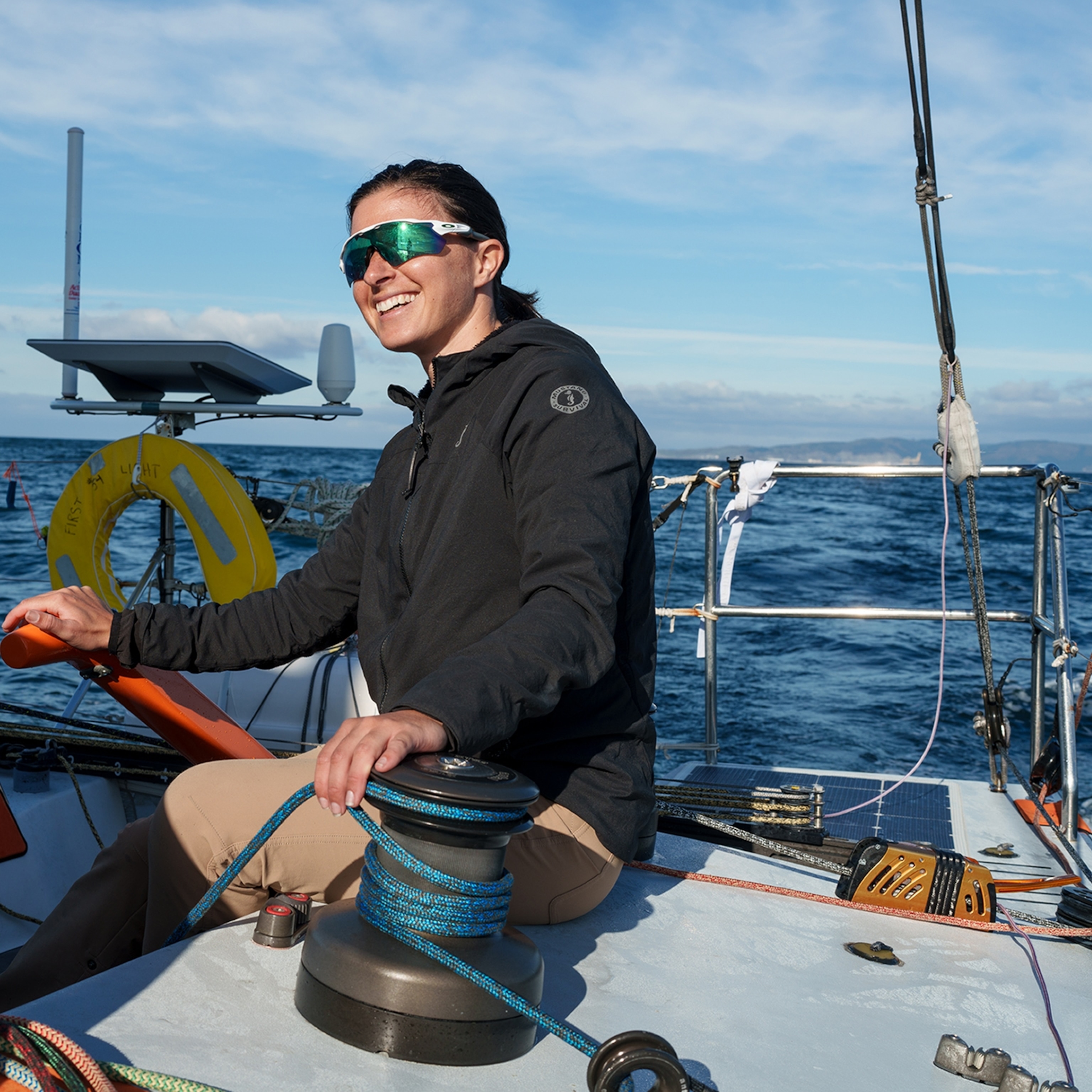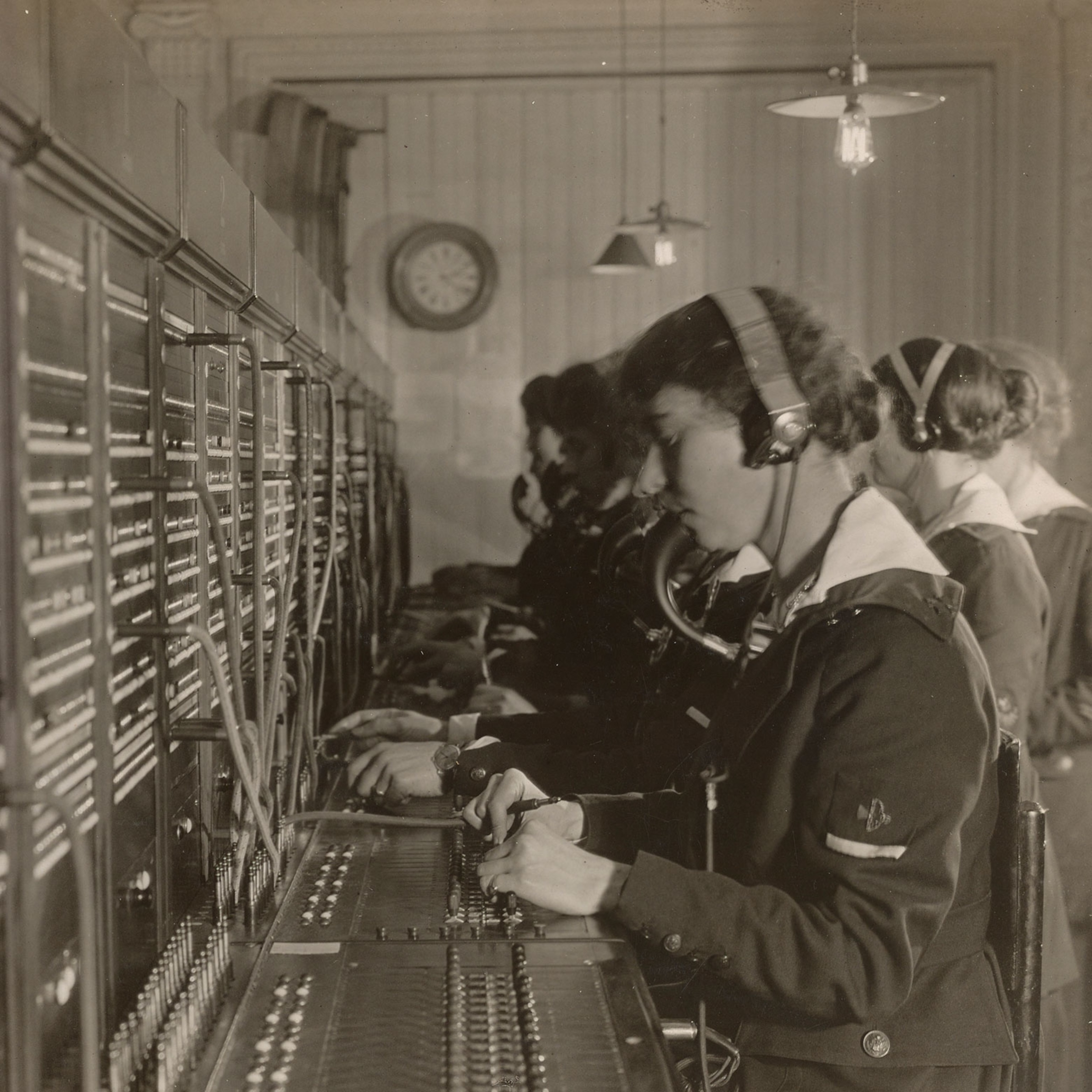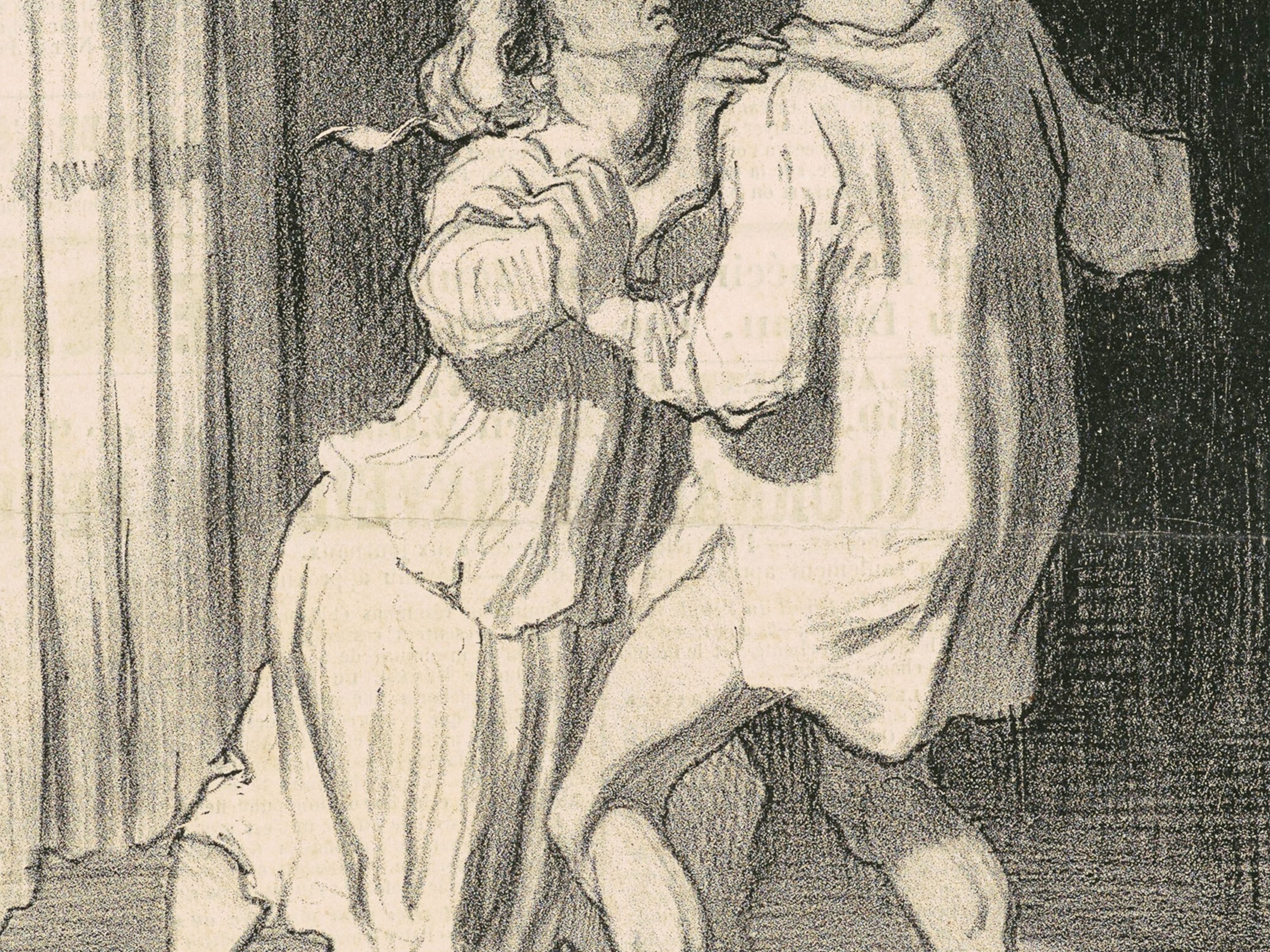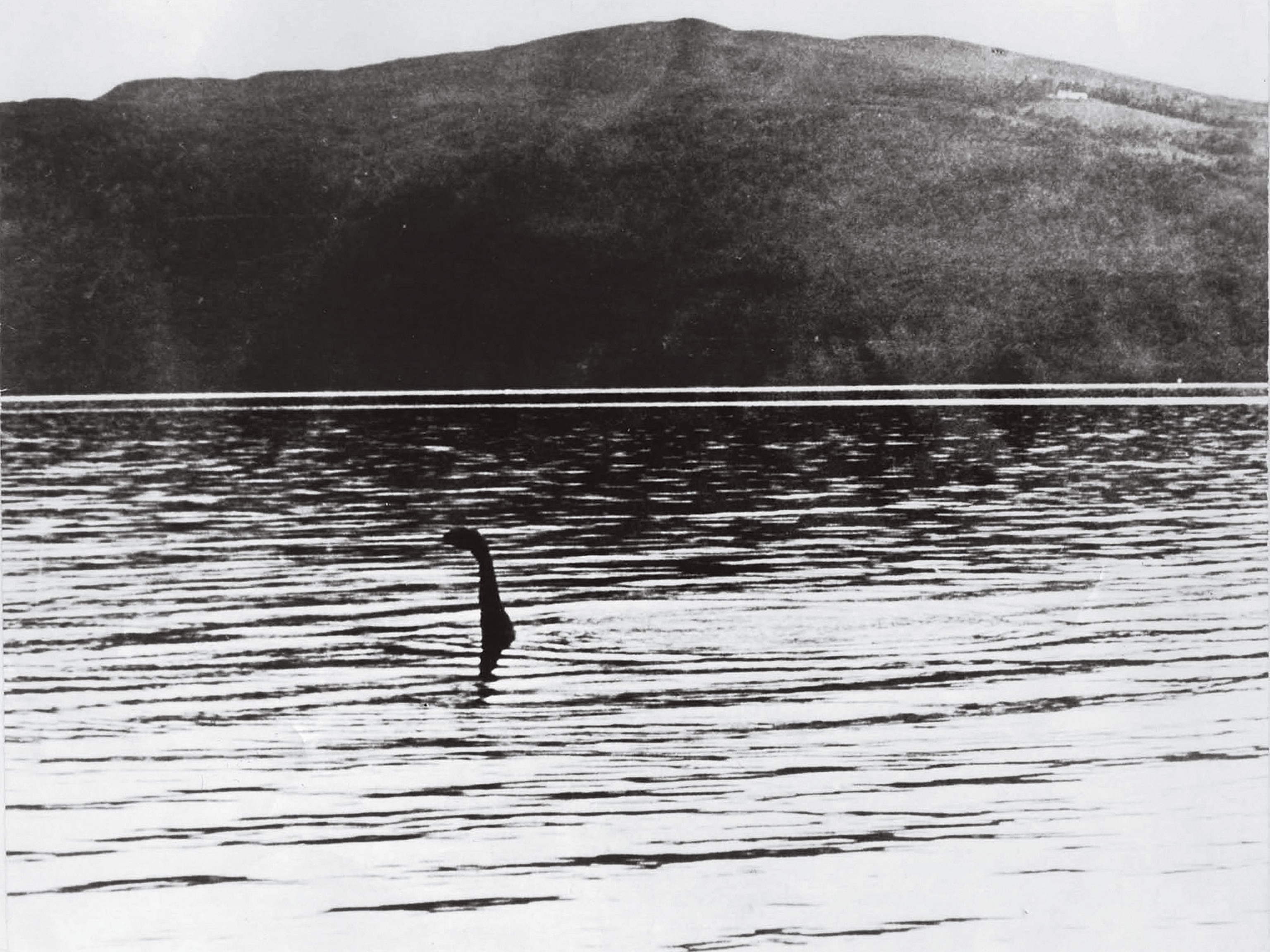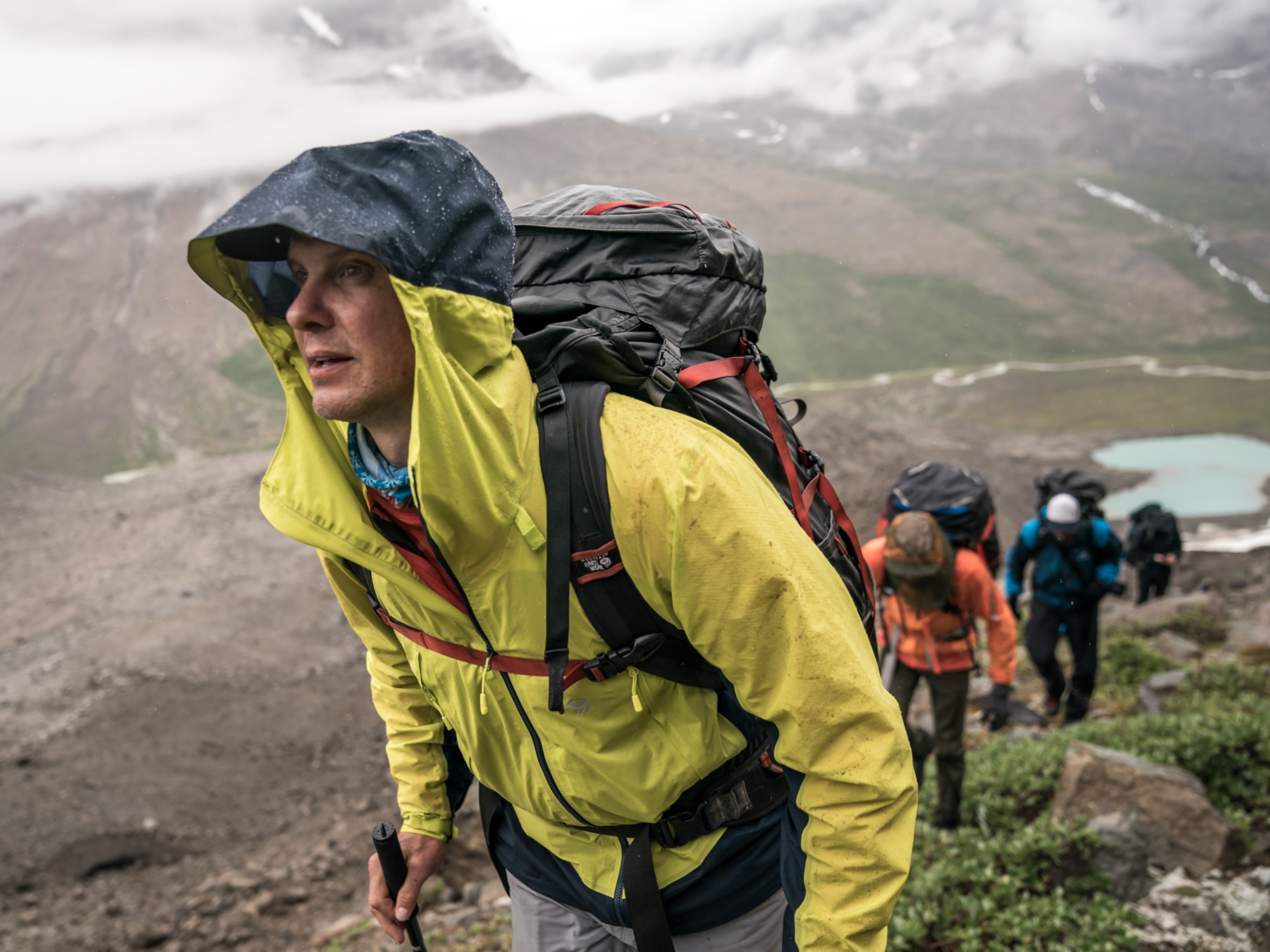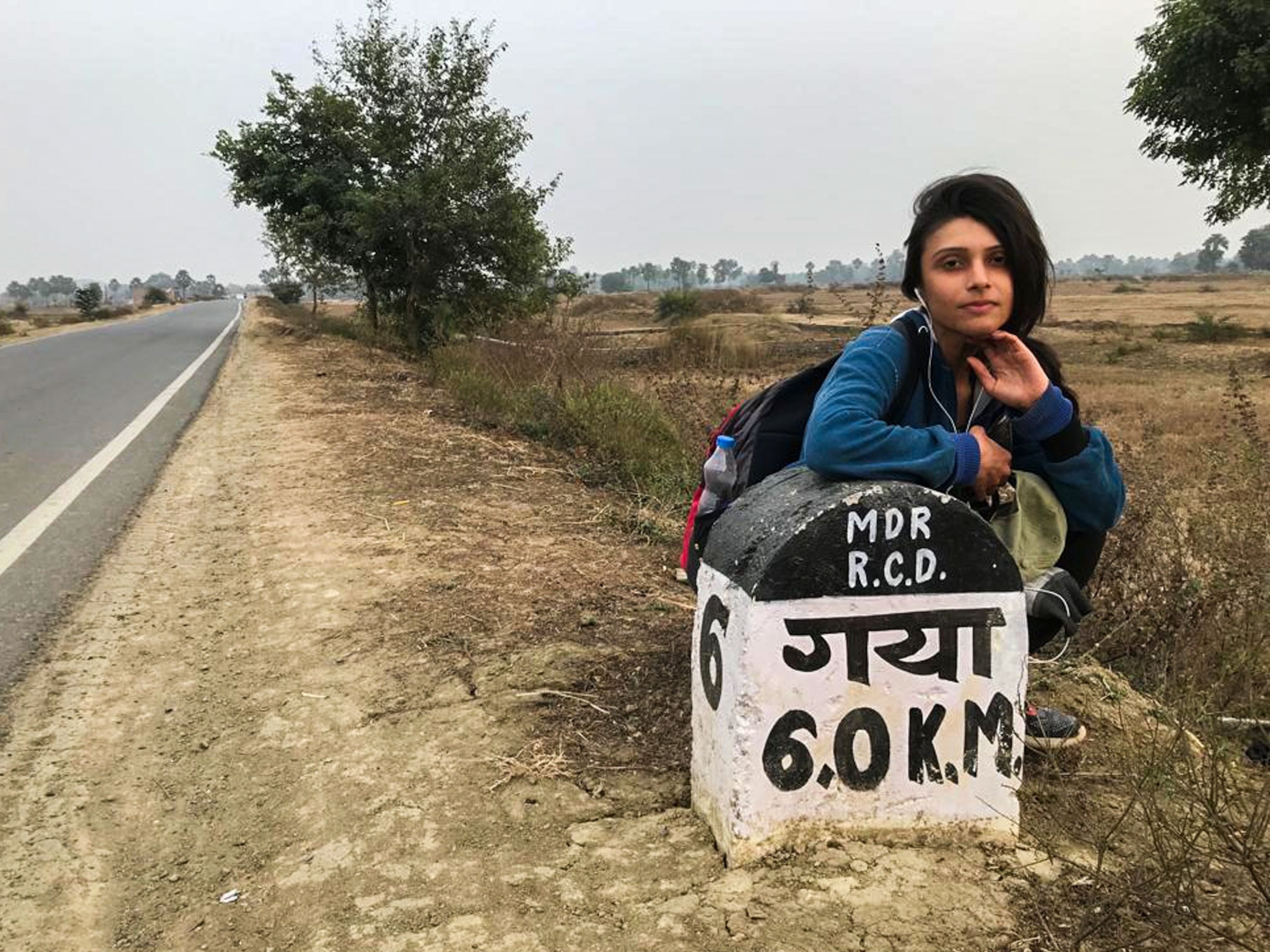
Could a woman walk around the world today?
Women adventurers reveal how gender inequality can limit movement—and imagination.
NELLIE BLY, a celebrated journalist, marched into her editor’s office and told him she had an idea. The year was 1888. She proposed to travel around the world, to beat the fictional record Jules Verne had chronicled in Around the World in 80 Days.
The editor replied that it was impossible: She’d need a chaperone, she would carry too much baggage, she spoke only English—and besides, only a man could make such a journey.
Bly replied, “Start the man, and I'll start the same day for some other newspaper and beat him."
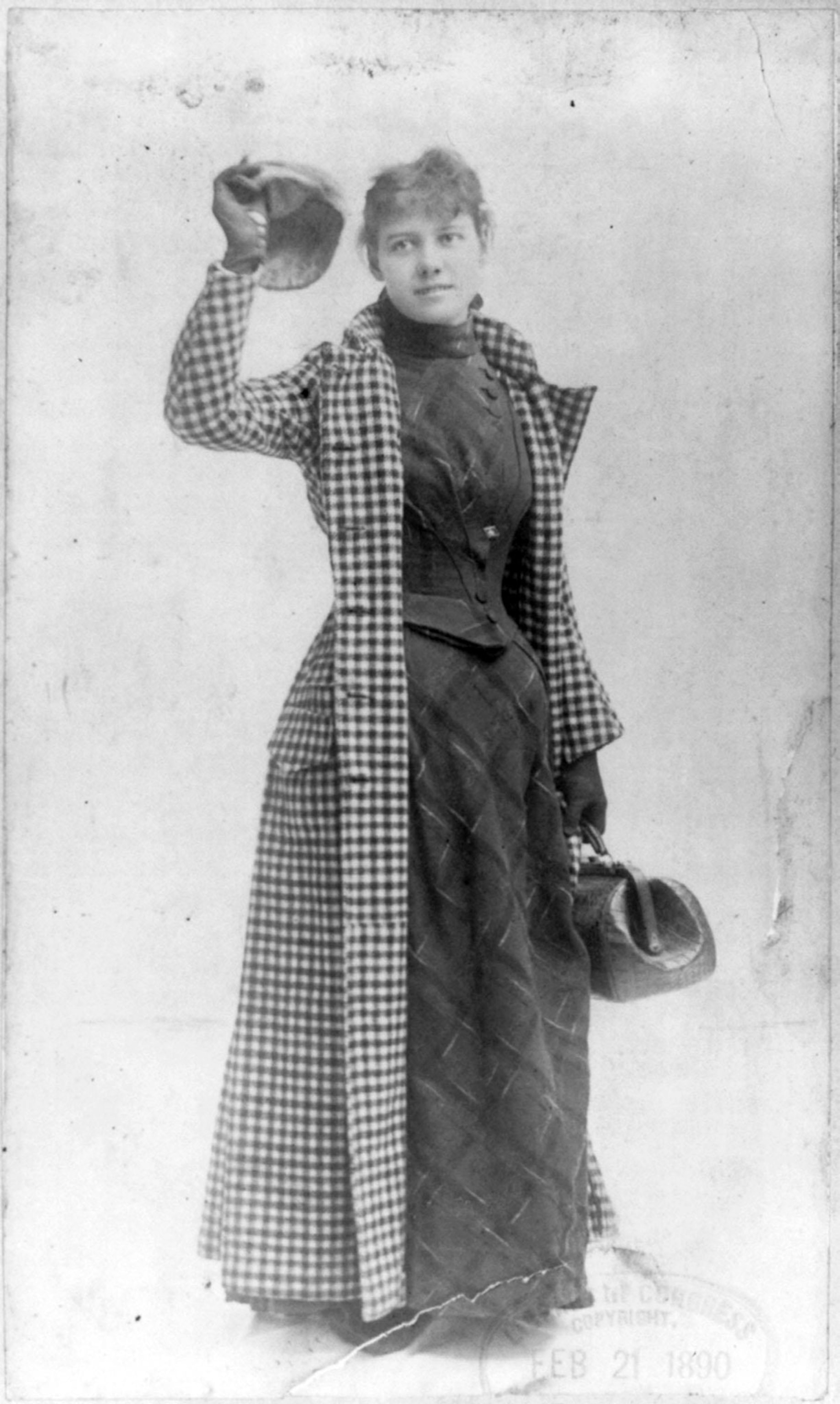
The paper was Joseph Pulitzer’s New York World, and they did, eventually, send Bly around the globe. She traveled alone, wore one dress, carried gold in her pocket and pound notes in a pouch around her neck, and packed a single handbag. (It contained toiletries, underwear, handkerchiefs, needle and thread, paper and pens, a drinking cup, and a jar of cold cream.) She sailed from Hoboken toward London, and 72 days, 6 hours, and 11 minutes later arrived by train in Jersey City, where a crowd of thousands had gathered to welcome her. Her journey set a world record.
Bly wasn’t given such an ambitious assignment in spite of who she was but because of who she was. Two years earlier, she had achieved national fame by going undercover for 10 days in the notorious New York City Lunatic Asylum. Her detailed reports on the unsanitary conditions and the mistreatment of the women inside prompted outrage and apology, then reform.
Racing around the globe was a similarly sensational undertaking, but it was less a story than a stunt—Bly’s published dispatches from the trip consist mainly of character sketches of fellow travelers and superficial observations of foreign cultures; they did nothing to challenge the racial stereotypes of the time. Steamship and railway schedules left no time to report stories, of course; that wasn’t the point. The journey showed readers of the World the wonders of machine transportation, and that the Western colonial empire was accessible to them. The last decades of the 19th century were a profitable time for journalism, and Bly’s challenge successfully played into publicity for the World, which held a contest for readers who could guess her time—nearly a million people participated. There was even a board game modeled on the journey.

Bly went on to publish better journalistic work than Around the World in 72 Days. Even so, I admire her demand to her editor: “I want to go around the world!...May I try it?” The question would be a bold one from a young woman—Bly was just 24 at the time—even today. A woman alone is trouble waiting to happen, we’re made to believe. A woman in strange places, among strange people, causes suspicion and fear. In much of the world, a woman traveling unaccompanied defies social or cultural norms; in some of the world, this act defies the law. Journalism, a profession predicated on going out into the world and following the trail of a story to its unknown end, is crippled by this gender divide. (Read how Amelia Earhart navigated the skies and society's expectations.)
I manage the social media accounts for the nonprofit Out of Eden Walk, a journalism project imagined—and now in its seventh year—by Paul Salopek. Paul is walking a path that encircles the globe and writing about the people and places he encounters. He is not often alone—he is joined by trekking guides, pack animals, fellow walkers and writers, but his route is often isolated.
The project has inspired a question, one I frequently see on our channels: Could a woman walk around the world? Does this project rely on maleness? Or whiteness? Or Western visa privilege?
The answer is yes: These markers of identity serve as valuable currency. But also no: Storytelling is not simply a megaphone for those in positions of power and privilege. So what would a woman-led walk look like? I can’t fully answer this question myself, nor can Paul—so I asked some of his female walking partners. Paul always walks with at least one local companion, often a journalist, an interpreter, or a trekking guide. In the 16 countries he’s crossed so far, he has been joined by dozens of people, of whom 14 have been women. During the past year, in India, he has walked with five women. I caught up with them by phone and email in the places they’ve moved on to: Nepal, Turkey, Jamaica, Seattle. They all vividly remembered the walking trail.
FOR THE MOST PART, our conversations were not about safety. If the solo female traveler inspires fear for her safety, it does so in others—her mother, her spouse; i.e. her self-appointed protectors—rather than herself. A recent New York Times story documents a rise in the number of solo women travelers, and chronicles incidents in which these women have been murdered, injured, or sexually assaulted. Such fearmongering is dispiritingly common, in the press as well as colloquially. The woman who went out walking after midnight and ended up in a ditch has become a mythology passed down from mother to daughter. Men, who also fall victim to attack, are assumed to learn courage and street-smarts from these negative experiences, while a woman will be forever damaged or traumatized—or worse.
This is not to undercut the reality of gender violence that is pervasive everywhere in the world. (More than a third of women globally are physically or sexually violated in their lifetime, most by intimate partners.) But worry becomes its own burden. Ita Skoblinski, a journalist who joined Paul in creating a story map of Jerusalem, told me that when she’s in a new place she becomes extremely aware of her environment. “My antennae are on,” she said. “A guy can think, I might get robbed. A woman thinks, I might get raped. It’s a very different fear.”
The casualness with which a man might enter an unfamiliar place is a luxury not always afforded to women. Arati Kumar-Rao, an Indian writer and photographer who walked through the country’s Punjab region, said, “I realized Paul could sleep, sit, bathe, poop anywhere without danger, while I could do none of the above without worrying about my safety.”
How much of this fear is internalized, how much projected by others? Camille Framroze, a lawyer based in the U.S., walked last year in the Indian state of Madya Pradesh. She wasn’t nervous about the trip until her family and friends started bombarding her with emergency precautions. But she never felt unsafe. “Staying with other people, asking for directions, and depending on strangers for everything in order to get from point A to point B was really not scary,” she said.
I live in New York City, and the street harassment I encounter daily reminds me that women are moving targets for unsolicited attention. On foot, of course, with a white man and a donkey in tow, women walking partners were met with unabashed curiosity. (Some areas of rural India haven’t seen a Westerner since the country’s independence in 1947.) For the women, questions often probed the nature of their relationships to the men in the group. Loveleen Mann, an Indian lawyer and former army captain, who walked in the mostly rural and conservative state of Rajasthan, took to describing Paul as her boss. Arati said, “People always asked who Paul was, what we were doing, who I was, was I married, where my husband was, did he allow me to do this, who was looking after my daughter while I was gone, was Paul married, why I was with him, was he a Christian, what caste I was.”
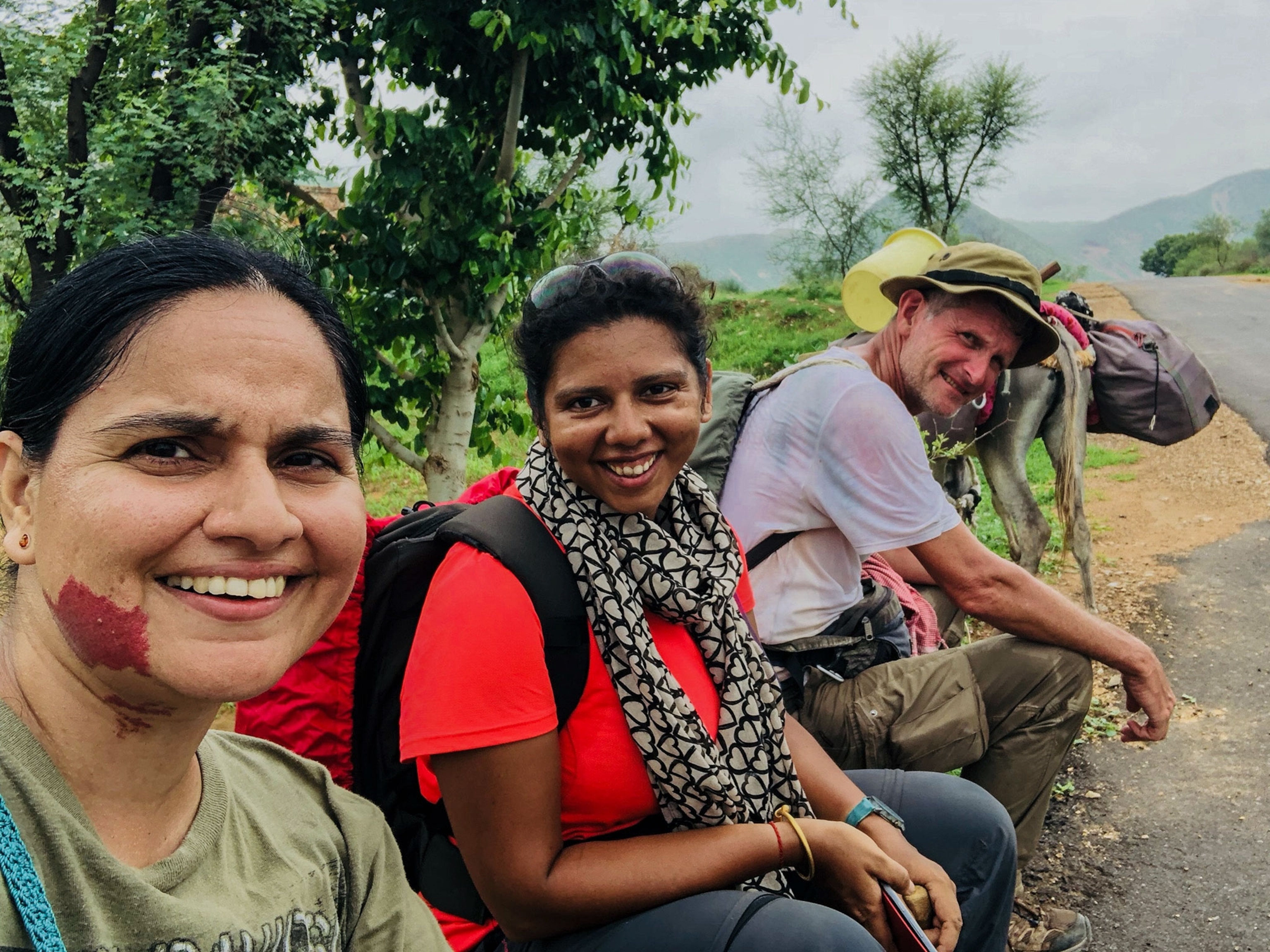
In my conversations with the women, I noticed a pattern of questioning and interrogation. “People were asking me, why did you choose this job, isn’t it difficult, can we help you with something,” said Furough Shakarmamadova, a professional trekking guide in Tajikistan. “They told me they could find me a car. I tried to explain, more than a hundred times, the idea of Paul, why he’s walking like this. They couldn’t accept what I said.”
Furough and Safina Shohaydarova, both expert trekkers, walked with Paul at separate times for more than a hundred miles along Tajikistan’s Pamir highway. The physical effort was easy, they told me—the only hard part was homesickness. (Safina was also preparing for her wedding the week after.) Walking along the road, Safina said, “Many drivers stopped and asked if it was my own will, or am I forced to do it, or was it the matter of money. They couldn’t understand that I like being in the mountains, and that I like to be strong.”
Where there are women in public, there are men to question them. To police them, sometimes, or to offer well-meaning advice, or express an opinion. Not all queries are malicious or overbearing, but public space is the arena of men, whether in Tehran or in Brooklyn. Women can’t move freely, without being subject to stares, comments, questions, catcalls, solicitations, threats. Everywhere, they are seen.
This policing of space is inseparable from the policing of female bodies. Priyanka Borpujari, who has been a journalist for 13 years and reported extensively throughout India, had no worry about physical harm or entering unfamiliar terrain on her walk with Paul. She said, “The biggest challenge for me was something all women deal with, but Paul did not. Which was the body. I have just grown up with way too many horrible preconceived notions about what my body can or cannot do. There was one day early on in the walk that I felt my bag strap and my bra strap were competing to kill me.”

Women have always been plagued by the pseudoscientific belief that the female body is not equipped for movement. “The belief that women walk worse is widespread throughout the literature of human evolution,” writes Rebecca Solnit in Wanderlust, her extraordinarily comprehensive book on the history of walking. The female body is a spectacle, designed to be looked at; or a single-use item, designed for childbirth; or a weakness, lacking in masculine strength and virility. The male body, on the other hand, is simply neutral—an assumed state of being.
Paul often writes about his body in the sense of feeling himself to be a seamless part of the landscapes he moves through—the human species built as an engine for movement and thought. His focus is intellectual, though, more than physical. Priyanka observed that while Paul endures great physical stress on the walk, he avoids talking about the real effects on his body. He doesn’t want physical hardship to become the subject of the story. For her, though, “it’s the most important and necessary thing to talk about how my body is feeling.” She added: “It makes me cringe because I know Paul would never talk about these kinds of things. I constantly think, is it okay to talk about this?”
Is there a woman alive who has never felt shame about her body? For women, simply having a body is a special kind of horror. And yet, no truth exists without a body to speak it from. It is a core feminist idea that the lived experience of being in the body shapes one’s perspective, one’s way of thinking. Talking to Priyanka, I was reminded of the writing of Jamaica Kincaid, Kathy Acker, Noelle Chatelet, of the art of Carolee Schneemann—work in which women’s bodies are on display in all their messiness, ugliness, and viscerality. But what about being part of the landscape? Priyanka said: “Think of a landscape that has been trampled on, that’s what women’s bodies are.”
FAR FEWER WOMEN have participated in the Out of Eden Walk—as walkers, writers, interview subjects—than men. As Paul has written, gender inequality is a global story: It is the most common, most deeply entrenched injustice he has encountered in six years of walking. Other persecuted groups experience limits to their freedom of movement—one need only look at police violence directed against black men in the United States—but, as Solnit observes, gender-based oppression is arguably vaster than the more localized oppression based on race, class, religion, ethnicity, and sexual orientation, having been integral to gender identity for millennia in most of the world. “Those who have been unable to walk out as far as their feet would take them have been denied not merely exercise or recreation but a vast portion of their humanity,” Solnit writes. (Watch black drivers explain their constant fear of being stopped by police.)
The larger question here, for this journalism project, concerns authorship: Who gets to tell what stories. For a journalist, telling the stories of others requires having access to a world outside. What stories do we miss when we accept that the world outside be absent of women?
“One thing I realized on the walk and in my own environmental stories is that the men always speak for the women. This needs to change and I intend to change it,” Arati told me. “There are unequal ways in which what happens on ground—from politics to policies, from inequities to economics, from climate change to environmental decay—affects women. These stories need to be told, and even focused on, as they are defining what is happening in rural India.”
Many of Paul’s female walking partners are themselves journalists. The effects of gender bias on their work are rarely so clear as being denied interviews or dismissed outright, they told me. But talking to subjects requires respect and trust, which may be less readily given to women. They observed that Paul was generally treated more seriously than them—whether because he was a man, was older, was an American, or just a curiosity was never clear. “I would be speaking in Hindi, but everyone would be looking at him,” Camille Framroze said. “All eyes on him. I could never quite tell how much of it was sexist and how much of it was just his foreignness.”
Noa Burshtein, an Israeli journalist who edits P.SEE, a magazine that exclusively publishes female bylines, told me, “People will let men be whatever.” For her, though, “it always goes to personal questions, how did you get that job? What’s your story? Who are you? I can’t be just a journalist, just a professional. I am always a woman who is a journalist.” She pointed out, though, the clarity offered by a woman’s perspective: “When you belong to a group that is not the controlling group, the group in power, you are able to see the influence of power.”
That’s one asset. A woman who is a journalist also has access to women’s spaces. “Paul can’t just walk into the kitchen and hang with the women making chapatis. He would have to stay with the rajput men, the macho and dignified men,” said Bhavita Bhatia, a journalist who joined the walk this year. (See how women photographers access worlds hidden from men.)
What sort of person must one be to walk the world? To go after the horizon, day after day? For Paul, it has taken decades of industry and experience, institutional support, relative freedom from domestic life, and enough dissatisfaction with the status quo to embark on something radically different—among countless other things. (He would add: an endless supply of knee cartilage.) I would add: confidence. Confidence, earned or not, is a tremendous power. While no one is immune to self-doubt (no sane person, anyway), men have been far better able to acquire this skill. And it is a skill—giving oneself permission to speak with authority, to be heard, to disagree—learned through education, maturity, and professional training. Men are more likely to receive the approval of family and peers and to study and work at established institutions.
All the women I spoke with are successful, capable, and benefit from their own various privileges. They know themselves. And yet, most told me that they weren’t sure they could do their walk with Paul until after they’d done it. Bhavita, who walked through two Indian states known for conservatism and violence, said, “The reason I signed up for this is that although I’ve traveled across the country, I haven’t gone to Uttar Pradesh and Bihar. I couldn’t imagine any other chance to just walk through—I thought, this guy is my only way. But now I feel like I could go back and do it.”
By that she means walk alone, and on her own terms. After joining Paul, almost every woman I spoke to could imagine themselves in his place. There are countless reasons why they may never do such a thing—other career ambitions, family commitments, bigger and better projects in mind—but, crucially, fear is not one of them.
She added: “I want to wake up to a day where I see a woman doing what Paul is doing. In my lifetime, I hope to see a young woman saying, I will do this too.”
NELLIE BLY DOESN’T dwell on her status as a solo woman traveler in her book, Around the World in 72 Days. (Though she does note the many men who made it their duty to look out for her safety.) Instead she writes what she sees, with wit and self-assuredness. Countless other women in history have, like Bly, walked (or sailed, or flown) ahead: Sacagawea, who guided Lewis and Clark through the Louisiana Territory; Ida Pfeiffer, who circled the world twice (and yet was denied membership to London’s Royal Geographical Society); Eliza Scidmore, a writer and photographer who joined the National Geographic Society in 1890 because her "daydreams were always of other countries"; Freya Stark, who wrote more than two dozen books on her expeditions in the Middle East; the Qing Dynasty pirate Ching Shih, who commanded the largest crew in history; Gertrude Bell, who through her desert treks in the Middle East and trust building with tribal chiefs wielded the most political power of any woman in the British Empire. Add to them the ancient women who walked out of Africa, who crossed the Bering Strait, who sailed to the unseen, unknown islands of the remote Pacific.
Paul is often described as a trailblazer. The women on the Out of Eden Walk are also charting new paths, making a way for those who’ll come next. Loveleen told me about one evening in Rajasthan when she disappeared into a field to bathe in privacy. Coming back into the village, accompanied by Priyanka, she found a group of schoolgirls waiting for them, eyes shining in the dusk. “How did you get into the army? How are you a lawyer? How are you a journalist?” they asked. They weren’t seeking to intrude, to contest, to prove anything. They wanted to know how so they could do it too.


